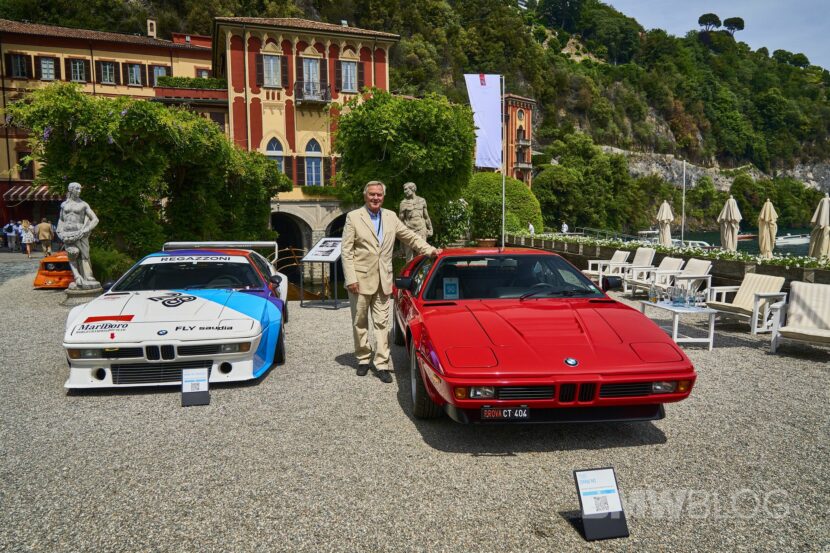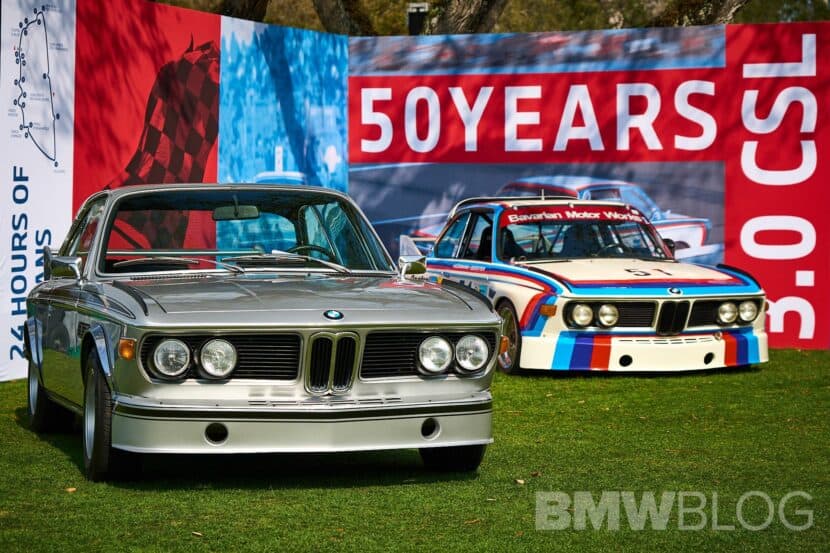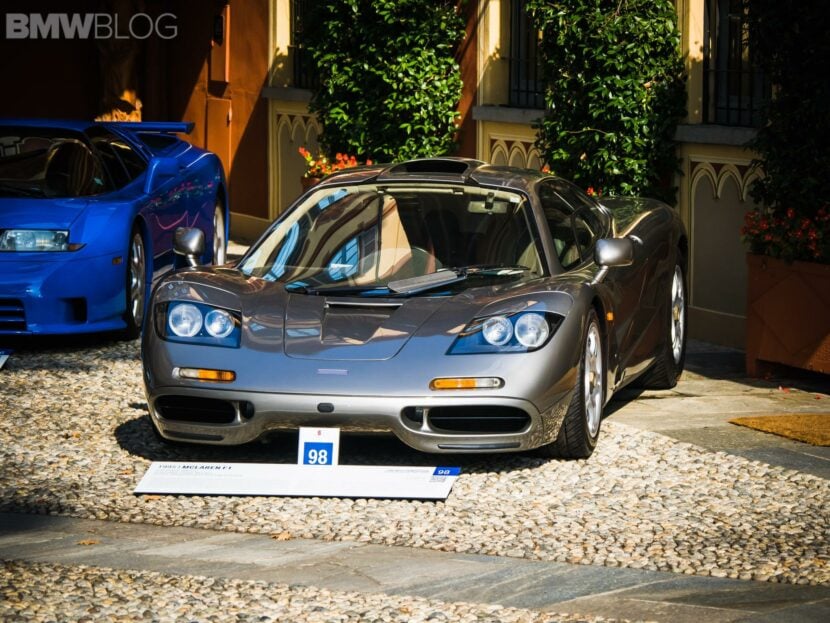When the first-generation BMW 3 Collection launched in 1975, few may have predicted its future as an icon within the automotive world. But, on the time, it confronted a stunning picture and branding drawback—it wasn’t seen as sporty because the Neue Klasse BMW 2002. However BMW was decided to repair this so that they turned to their motorsport division, the place Jochen Neerpasch, the founder and father of BMW M, led a daring effort to remodel the E21 right into a racing machine. Extremely, the BMW E21 320 Group 5 was developed in simply three months.
The Batmobile
This wasn’t BMW Motorsport’s first rodeo. That they had already turned heads within the racing world with the BMW 3.0 CSL, the “Batmobile,” which dominated competitions throughout Europe and the U.S., from Spa and Nürburgring to the European Touring Automotive Championship. However success doesn’t final without end, and because the 3.0 CSL started to indicate its age, BMW sought its successor within the M1—a undertaking developed and in-built collaboration with Lamborghini. Sadly, Lamborghini’s monetary troubles quickly spiraled out of business in 1978.


Confronted with this disaster, Neerpasch took a daring step: the legend says he and his staff spirited away BMW’s M1 prototypes from Lamborghini’s manufacturing facility which was underneath lockdown as a result of chapter. With the M1 delayed and BMW Motorsport underneath stress, Neerpasch wanted a brand new resolution—and quick. The reply got here within the type of the first-generation E21 3 Collection. The ensuing race automotive, the BMW 320 Group 5, drew on the confirmed energy of BMW’s 2.0 liter, four-cylinder Components 2 engine. Although developed in document time, the undertaking was something however easy.
Cue the BMW 320 Group 5
The 320 Group 5 debuted within the German Racing Championship (DRM), however BMW added a twist: the launch of the BMW Junior Group, a brand new racing program designed to coach younger drivers for skilled motorsport. Critics weren’t in love with the concept of giving rookies the wheels of such highly effective machines, however the gamble paid off. The juniors delivered thrilling performances from the outset, with Marc Surer clinching victory of their very first race. Surer and his teammates, Eddie Cheever and Manfred Winkelhock, all went on to race in Components 1. Years later, Neerpasch would revive this idea at Mercedes, serving to launch the profession of a younger Michael Schumacher.
BMW’s ambitions didn’t cease at Europe. Neerpasch and legendary engineer Paul Rosche despatched three 320 Group 5 vehicles to the U.S. to compete within the IMSA championship, partnering with McLaren to handle the racing program. McLaren went a step additional, turbocharging the Components 2 engine to spice up its energy from 300 to over 600 horsepower. Whereas the turbocharged 320 usually suffered reliability points, its sheer pace made it a fan favourite.
Neerpasch Leaves BMW
Over three seasons, it claimed eight wins and 6 podiums, providing much-needed pleasure in a sequence in any other case dominated by Porsche. By the late Seventies, amongst tensions over the troubled M1 and dreaming concerning the supreme motorsport competitors, Neerpasch determined to go away the corporate. He joined Peugeot to pursue his Components 1 dream. The French firm needed to overview the Talbot model with a Components 1 undertaking as the primary promotion instrument, and for them Neerpasch proposed to construct a staff in partnership with Brabham. He had additionally an thought for an engine, an answer he began to know fairly nicely: a turbocharged evolution of BMW’s Components 2 powerplant.
The 1,300 HP F1 Engine
In the long run, the hassle collapsed, and Talbot deserted its Components 1 ambitions. Nevertheless, Neerpasch’s imaginative and prescient had already set the wheels in movement. BMW took the concept and started working instantly with Brabham and its good designer, Gordon Murray. Collectively, they developed a 1.5-liter turbocharged four-cylinder engine able to jaw-dropping energy. Paul Rosche later revealed that BMW’s dynamometers couldn’t even measure the engine’s full output, which exceeded 1,300 horsepower. BMW’s mission was clear: victory. In 1983, they achieved it, with Nelson Piquet successful the Components 1 Drivers’ Championship.
How the McLaren F1 Got here to Life
Murray’s engineering prowess ultimately led him to develop into the chief designer for the McLaren F1 staff, the place he created, amongst others, the enduring MP4/4—one of the crucial dominant vehicles in Components 1 historical past. Ayrton Senna’s triumph with this automotive in 1988 cemented its legendary standing. After leaving the world of Components 1, Murray turned his consideration to the street, designing the McLaren F1—a hypercar that redefined benchmarks for pace and engineering. Powered by a naturally aspirated V12 developed by Paul Rosche, the McLaren F1 proudly bore the ‘BMW M Energy’ badge. With 627 horsepower, it boasted probably the most highly effective manufacturing engine BMW had ever made—a document that stood for many years, damaged solely by the engine powering the BMW M5 CS.
The McLaren F1 wasn’t simply quick—it was adored by its homeowners. Many drove their vehicles extensively, accumulating tens of hundreds of miles regardless of their rarity and immense worth. On the racetrack, the McLaren F1 GTR surprised the world by successful the 24 Hours of Le Mans in 1995, securing 1st, 2nd, and 4th place in its debut yr. (Granted, 1995 was an unpredictable yr at Le Mans, as all prototype vehicles faltered, permitting a GT automotive to assert an sudden victory.) Impressed by this triumph, BMW returned to Le Mans in 1999 with the V12 LMR, powered by a carefully associated engine. That yr, BMW achieved its first and solely general victory on the legendary race.
BMW’s most important motorsport triumphs—in Components 1 and Le Mans—had been rooted in partnerships, audacious selections, and remarkably a particular reference to McLaren by the years, with BMW race vehicles with McLaren modified engines, and McLaren hypercars with BMW produced engines. Lamborghini’s chapter in 1978 that pressured BMW Motorsport to shift focus, turned a catalyst for this outstanding journey.
At one level, Neerpasch even recommended that BMW purchase Lamborghini, however the thought was dismissed as a result of fears of inheriting Italian chaos. Whereas BMW could have been proper to hesitate, it’s intriguing to think about how the automotive world would possibly look at the moment if they’d taken that leap.










